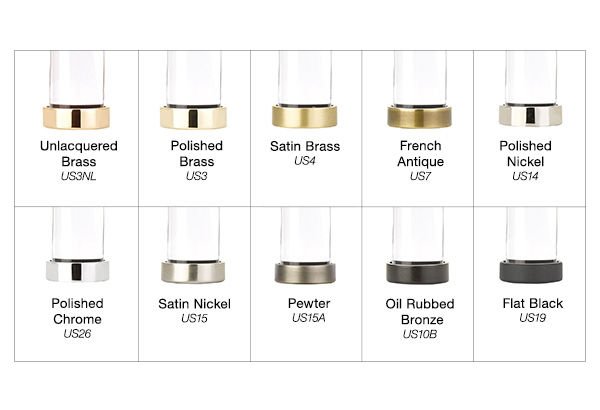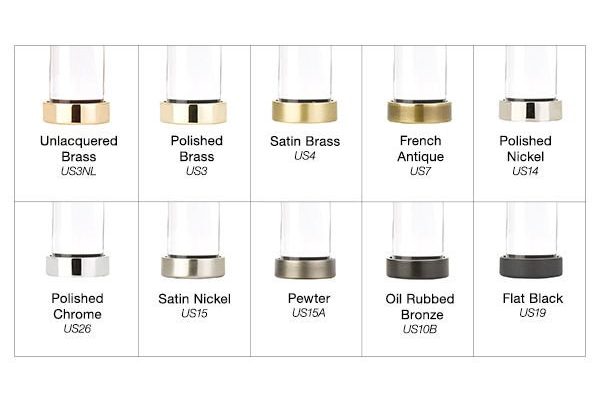
Think of solid brass as a hearty soup simmering all day—it’s rich, flavorful, and stands the test of time. Plated hardware, on the other hand, is like a fancy garnish that looks pretty but doesn’t hold much substance. Today, we’ll explore how to spot the differences between these two types of hardware so that the next time you shop for something shiny, you’ll know exactly what you’re getting.
What Is Solid Brass?
Solid brass is a metal alloy primarily made of copper and zinc. While it might sound technical, think of it as a blend that gives the material strength and beauty. This combination not only makes solid brass durable but also resistant to corrosion, ensuring that it ages well over time. You’ll commonly find solid brass used in high-quality fixtures like doorknobs, light fixtures, and plumbing fittings.
One of the key characteristics of solid brass is its weight. If you pick up a solid brass item, it feels hefty in your hand. The density of the material contributes to its strength and longevity. In contrast, plated hardware tends to feel lighter and often more fragile. If you’re unsure whether you’re holding solid brass or something else, start with the weight test. A heavy item is often a good indicator of solid brass.
Another distinctive feature of solid brass is its natural patina. Over time, brass can develop a tarnished look, which some people adore for its vintage charm. If a piece appears to be tarnished or has a warm, rich tone, it might be solid brass that has simply aged gracefully.
Understanding Plated Hardware
Now let’s talk about plated hardware. This refers to items that have a thin layer of brass applied over a different, often cheaper, material, such as steel or aluminum. Think of it like a layer of icing on a cake; it may look appealing, but what’s underneath is what really counts. The plating process can give a piece a glossy appearance, making it instantly eye-catching, but it often lacks the durability of solid brass.
What’s the catch? Plated hardware can wear down quickly. With time, you might notice the plating chipping or rubbing off, revealing the less attractive metal beneath. If you see scratches or signs of wear, chances are you’re dealing with plated hardware. It’s important to remember that while plated items can still look nice, they won’t hold up as well in the long run compared to their solid brass counterparts.
Many manufacturers use plating as a cost-saving method, which can make it tempting for buyers looking for a budget option. However, understanding the differences can save you from having to replace items frequently and can also help you make an informed choice that aligns with your style and values.
Simple Visual Tests to Identify Brass
Trying to figure out whether a piece of hardware is solid brass or just plated? There are some quick visual tests that can help.
1. Color and Finish: Genuine brass has a warm, golden hue. Plated items can sometimes look overly shiny or have a more artificial color.
2. Scratching Test: Lightly scratch an inconspicuous area. If you see a different color underneath, it’s likely plated.
3. Magnet Test: Solid brass isn’t magnetic. If a magnet sticks, it’s probably not solid brass.
You might be wondering how complex this can be, but these tests can quickly give you valuable insights without needing any specialized tools.
How to Check for Weight and Density
As mentioned earlier, weight is a crucial indicator of whether you’re looking at solid brass. Here’s how to physically assess this:
– Lift it Up: Pick up the hardware and gauge the weight. Solid brass should feel substantial. If it feels too light, it’s probably plated.
– Compare: If you have two similar items—one you know is solid brass and one you’re unsure about—hold them side by side to feel the difference.
This method isn’t foolproof, but weight can often guide you in the right direction. Getting a sense of what a solid brass piece feels like can help you make more informed purchases in the future.
Long-term Performance: Why It Matters
When you’re investing in hardware, think about how it will perform over time. Solid brass is known for its durability and resistance to corrosion. This means it can withstand daily wear and tear without losing its charm, making it an excellent long-term investment.
Plated hardware, however, is more susceptible to scratches and may require more frequent replacement. If you’re looking for fixtures that will last for years, solid brass is typically the way to go. You might be okay with plated items for a short-term solution, but if you want something that stands the test of time, solid brass is worth every penny.
Consider your lifestyle and the environment where the hardware will be used. For example, if you live in a humid area, solid brass can hold up better against moisture than plated items.
Cost Considerations: Solid Brass vs. Plated Hardware
Cost is often a deciding factor when purchasing hardware. Solid brass is usually more expensive due to its higher quality and durability. However, think of it as an investment. The upfront cost may be higher, but because solid brass can last for decades or longer, it often saves you money in the long run.
Plated hardware is generally more budget-friendly, which can be tempting. But if you find yourself replacing items frequently due to wear and tear, those savings can quickly disappear. It’s essential to weigh the initial costs against potential future expenses.
Your choice may also depend on where the hardware will be installed. For high-traffic areas or items you interact with daily, investing in solid brass may provide better value. In contrast, for decorative elements that don’t get much use, plated hardware might suffice.
Spotting Credible Sellers
Finding a reputable seller is just as important as knowing how to identify the quality of the hardware itself. Look for sellers who specialize in solid brass products and offer clear descriptions and warranty information.
– Reputation: Check reviews or ask for recommendations. Sellers with a solid reputation are less likely to mislead about the quality of their products.
– Transparency: Reliable sellers will provide detailed information about materials, production methods, and even return policies. If they can’t or won’t share this info, that’s a red flag.
Being informed doesn’t just help you make the right choice; it also builds trust with the people who sell these products.
Final Thoughts on Making the Right Choice
Identifying genuine solid brass versus plated hardware can feel tricky at first, but once you know what to look for, it becomes much easier. Remember to consider the weight, feel, and longevity of the items you’re assessing. Whether you’re updating your home decor or fixing up your kitchen, choosing the right hardware can make a big difference in both aesthetics and durability.
So next time you’re shopping, keep these tips in mind. Solid brass might cost a bit more, but if you’re looking for quality that lasts, it’s worth every cent. Happy shopping!
